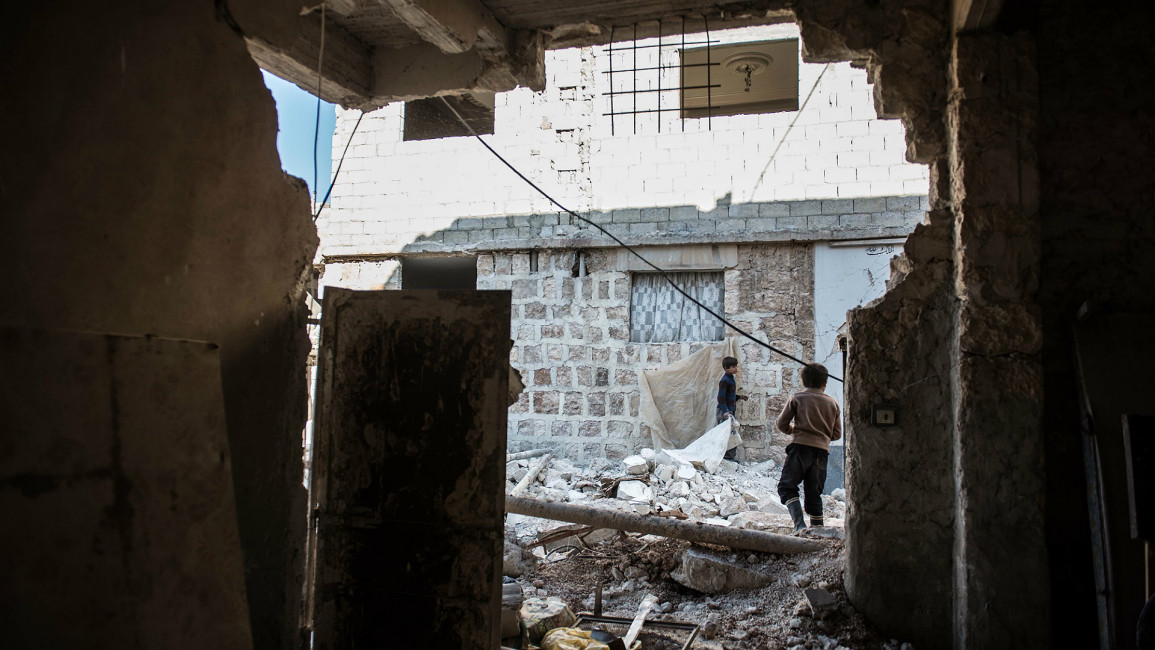Syrians trapped in besieged areas 'face horrific threat'
Hundreds of thousands of Syrians trapped in besieged areas are facing "severe and horrific threats" and the last months of the war have been some of the worst for civilians, the UN humanitarian chief said on Thursday.
"For Syria, that is saying something," Stephen O'Brien told the Security Council.
He said military operations and the continuing use of explosive weapons in populated towns and villages in Hama, Damascus, Idlib, Aleppo, Daraa, Raqqa and Deir Az-Zour governorates "have killed and injured hundreds of civilians over the past weeks and displaced tens of thousands more."
Throughout Syria, O'Brien said, "some 13.5 million people will try to go to sleep tonight in dire need of assistance, and the scale and severity of humanitarian needs show no sign of dissipating."
He had hoped that 2017 would see "a step change" in the delivery of aid, but O'Brien said access is no better than it was at this time last year.
While the pace has picked up with several aid convoys getting through over the past week, he lamented that for every convoy that reaches its destination several others were unable to deploy because of delays caused by the Syrian government.
 |
Throughout Syria some 13.5 million people will try to go to sleep tonight in dire need of assistance, and the scale and severity of humanitarian needs show no sign of dissipating |  |
Some opposition groups also "continue to threaten or refuse to cooperate with humanitarian workers," O'Brien said.
He said access to areas controlled by the Islamic State group, including parts of Raqqa governorate near the movement's so-called capital, remain "extremely limited."
O'Brien said he is "deeply anxious for the safety and protection of over 400,000 civilians due to ongoing military operations in Raqqa governorate," where a US-led coalition is fighting IS.
The UN continues to receive reports that fighting and airstrikes have caused deaths and injuries to "scores of civilians and damage to civilian infrastructure, including schools, bakeries, markets and water infrastructure," he said. He cited airstrikes on March 21, March 22 and March 27.
O'Brien said fighting in the northern countryside of Hama governorate over the past week forced 40,000 people to flee their homes and warned that many may need to move again because fierce fighting continues and front lines are shifting.
 |
The UN continues to receive reports that fighting and airstrikes have caused deaths and injuries to scores of civilians and damage to civilian infrastructure, including schools, bakeries, markets and water infrastructure |  |
In eastern Ghouta in Rural Damascus, some 400,000 people are trapped by Syrian government forces, he said.
There have been more reports of civilian casualties and injuries due to heaving bombing and shelling, and the World Health Organization has reported that all three public hospitals and 17 public health care centres aren't functioning, he said.
"Put starkly, this tightening of the siege has started a time bomb for the people of eastern Ghouta," O'Brien said. The last aid delivery was in October and "it is critical that the UN and partners be facilitated access to the enclave before the conditions deteriorate further."
The UN humanitarian chief expressed concern at agreements between parties for evacuations from the rebel-held al-Waer neighbourhood in Homs and from the besieged towns of Madaya and Zabadani in Rural Damascus and Foua and Kefraya in Idlib.
O'Brien said "all sieges are stark, contemptuous violations" of Security Council resolutions and must be lifted immediately. But he stressed that any evacuations must be voluntary and must not be done "through any type of 'surrender' agreement which results in the decimation of an area and the forced displacement" of civilians.
Discussing humanitarian efforts, O'Brien said the UN sought to reach 787,500 people via road convoys in March but the government only approved 44 percent of the deliveries to 348,200 people, the lowest number since March 2016 when it began the monthly plan process.
The government later in the month increased its approvals to 74 percent, but by Thursday the UN had reached just 200,000 people, he said.
O'Brien said the UN team has submitted a plan that aims to reach one million people in 28 besieged and hard-to-reach locations in April and May.



